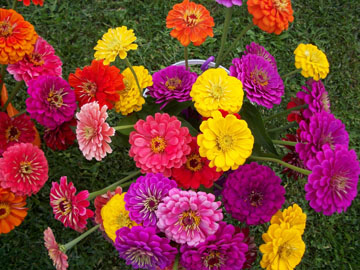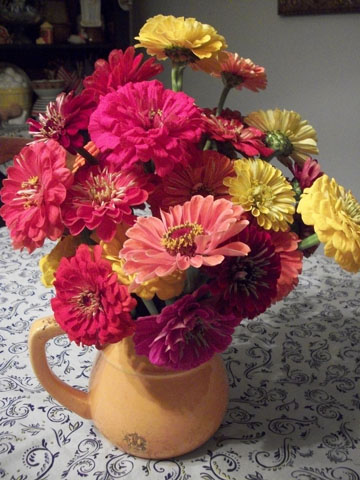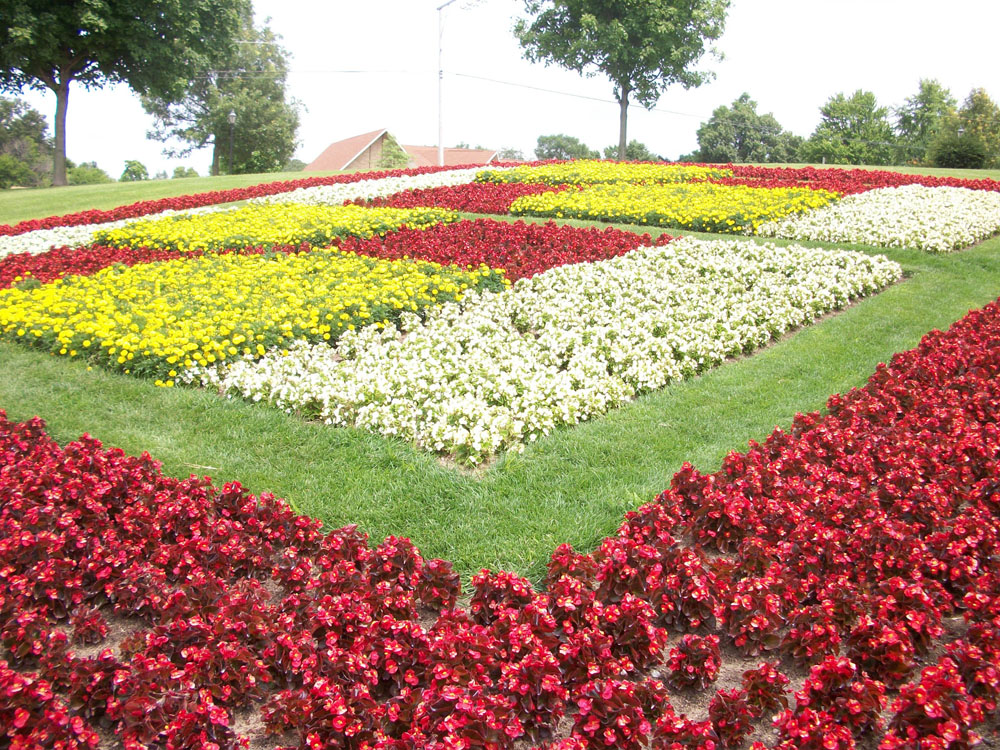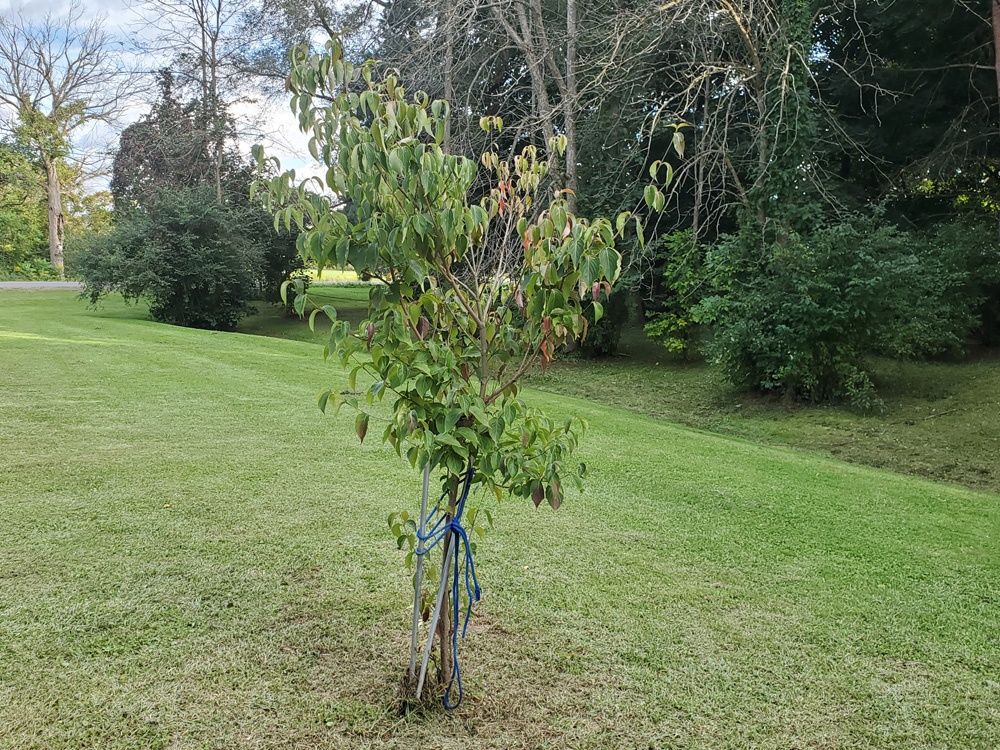Simple annuals bring a world of color to the garden

Late summer is a time of great bounty in my garden: tomatoes, sweet corn, beans, summer squash, broccoli, Swiss chard, apples, grapes, sunflowers, amaranth and zinnias, lots of zinnias.
I look forward to the flashy zinnia blooms for bouquets all season and was crushed this past June when my first planting barely germinated – three rows of seeds with only a smattering of seedlings.
Zinnias are so easy to grow from seed and have done so well for me for so many years that I was devastated and feared that there might be no crop this year. I believe the problem was a combination of sowing the seeds too deep and the heavy rain that poured down the day after I planted. Then I was worried because I wouldn’t have a chance to re-seed until after the Fourth of July because we were traveling out of town.
I went ahead and ordered more seed and in mid-July planted new seed between the sparse plants from the initial planting. Fortunately, the second planting germinated well and caught up quickly. Now all the plants are blooming profusely – providing cheerful color in my cutting garden and in bouquets on my table.
I’m never alone when working near the zinnias or when I’m walking the rows harvesting blooms. The flowers attract butterflies – including monarchs and swallowtails – and hummingbirds like no other flowers in my garden. It is not unusual to see two or three hummers “fighting” for first dibs over the blooms.
My favorite variety is Benary’s Giant, which I’ve grown almost exclusively over the years in the cutting garden. I also love the candy-stripe and cactus-flower varieties for their yummy colors and the texture they add to bouquets. I want to try more varieties in the future and will plant some in border and perennial beds including varieties like the Profusion and Zahara series which are known for their drought tolerance and disease resistance.
Zinnias really are a wonderful annual to grow and also provide the satisfaction that comes from growing a beautiful flower from seed. They come in gorgeous bright colors from yellow to rich purple-reds as well as soft pastels, lime green and white. You can plant tall varieties for the back of the border and for cutting and medium and short varieties for everywhere else. People sometimes mistake my Benary’s Giant blooms for dahlias, the flowers are so large and richly-colored.
 The more you pick zinnias, the more they will bloom. My harvest continues right up until frost when so many other annuals are fading fast and most perennials have been cut back in anticipation of the next growing season. The red and deep red blooms are especially dazzling when cut and placed in seasonal harvest displays near pumpkins and gourds and they also look great in the vase with sprays of autumn broom corn and weepy stalks of amaranth.
The more you pick zinnias, the more they will bloom. My harvest continues right up until frost when so many other annuals are fading fast and most perennials have been cut back in anticipation of the next growing season. The red and deep red blooms are especially dazzling when cut and placed in seasonal harvest displays near pumpkins and gourds and they also look great in the vase with sprays of autumn broom corn and weepy stalks of amaranth.
If you would like to try planting zinnias next year, sow the seeds after all danger of frost is past, 1/4-inch deep – the seeds actually need some light to germinate. You can easily stagger plantings so that you have blooms from early August through early autumn. I planted right up until late July when I found a packet that I had missed. The plants were blooming by early September.
When seedlings are about three inches tall you can thin them. This helps with air circulation and can prevent powdery mildew problems – although many of the new varieties have excellent mildew resistance.
Japanese beetles have been the biggest problem in my garden. They love to munch through the tender leaves of growing seedlings. You can pick them off into a container of soapy water if you have time, but I’ll admit, I do use small amounts of pesticide – usually after one light application the beetles stay away. Once the zinnias start to bloom – I won’t use any pesticides and will hand pick, but the problem is typically worse when the plants are small.
I’ve never tried to save the seeds, but it sounds very easy. According to www.organicgardening.com, all you have to do is clip off a dried flower head and either pull the flower apart and remove the seeds or simply save the entire blossom intact. Place the blossom in an envelope, label and seal. Store the seeds in a cool dry place until it is time to plant.
9/15/13






